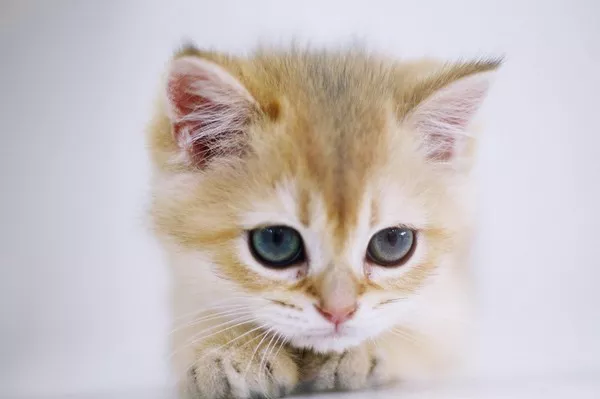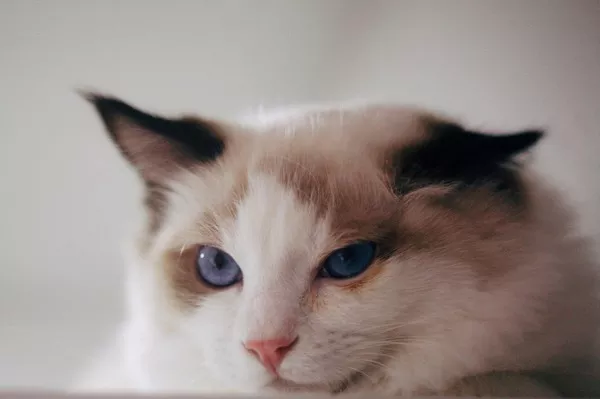Introduction to Calico Cats
Calico cats are renowned for their striking and vibrant coat patterns, characterized by patches of three distinct colors: white, black, and orange. However, it’s essential to clarify that “Calico” refers specifically to a color pattern rather than a distinct breed. These cats can belong to various breeds, including American Shorthair, Persian, and Japanese Bobtail, among others. The term “Calico” originates from the word Calicut, a city in India known for its colorful printed fabrics. Calico cats exhibit a genetic phenomenon known as codominance, where multiple genes interact to produce their unique coat pattern.
Genetics of Eye Color
Similar to coat color, a cat‘s eye color is genetically determined. At birth, kittens typically have blue eyes due to the absence of melanin in their iris. However, as they mature, melanin production increases, leading to a change in eye color. The genes responsible for eye color in cats are complex, with multiple factors influencing the final hue.
Common Eye Colors in Calico Cats
Calico cats can have a range of eye colors, including green, gold, copper, and amber. Blue eyes are less common in Calico cats compared to other colors, primarily due to genetic factors. Blue eyes result from a lack of melanin in the iris, causing light to scatter and reflect, giving the eyes their characteristic blue hue. While blue-eyed Calico cats exist, they are relatively rare compared to other eye colors within the breed.
Age-Related Changes
In the first few weeks after birth, it’s common for Calico kittens to have blue eyes. As they grow older, usually between six to twelve weeks of age, their eye color begins to change as melanin production increases. The final eye color may not fully develop until the kitten reaches three to four months of age. During this transition, it’s normal for the eyes to appear to change color gradually, often shifting from blue to green, gold, or amber.
Health Implications
Changes in eye color in Calico cats are typically part of a natural developmental process and aren’t indicative of health issues. However, sudden or significant changes in eye color, especially in adult cats, could warrant veterinary attention. Health conditions such as uveitis, glaucoma, or cataracts may cause changes in eye color or appearance and can indicate underlying health issues that require prompt treatment.
Breeds with Blue Eyes
While blue eyes are less common in Calico cats, they are prevalent in certain breeds due to specific genetic traits. Breeds such as Siamese, Ragdoll, and Himalayan are known for their striking blue eyes, which are a result of a genetic mutation that affects melanin production in the iris. Occasionally, Calico cats from these breeds may inherit the gene for blue eyes, leading to the presence of blue-eyed individuals within the Calico population.
Caring for Calico Cats
Caring for Calico cats involves maintaining their overall health and well-being, including proper eye care. Regular veterinary check-ups are essential to monitor any changes in eye color or appearance and to address any potential health issues promptly. Additionally, providing a balanced diet, regular exercise, and a stimulating environment can contribute to a Calico cat’s overall health and happiness.
Proper grooming is also important, especially for long-haired Calico breeds, to prevent matting and maintain a healthy coat. Regular brushing helps remove loose fur and reduces the risk of hairballs. Additionally, providing appropriate scratching posts and toys can help satisfy their natural instincts and prevent destructive behavior.
FAQs
Do all Calico cats have three colors in their coat?
While the traditional Calico pattern consists of three colors—white, black, and orange—some variations may include additional colors or patterns, such as dilute Calicos with softer pastel tones or tortoiseshell Calicos with predominantly black and orange patches.
Can Calico cats have heterochromia (different-colored eyes)?
Yes, although rare, Calico cats can exhibit heterochromia, where each eye has a different color. This occurs due to genetic factors that affect melanin distribution in the iris, resulting in distinct eye colors.
Are Calico cats exclusively female?
Calico cats are predominantly female due to the genetic factors involved in producing their unique coat pattern. However, male Calico cats do exist but are exceptionally rare and typically have genetic abnormalities, such as XXY chromosomes.
Is it normal for Calico cats’ eye colors to change as they age?
Yes, it’s normal for Calico kittens’ eye colors to change as they mature. The final eye color may not fully develop until they are three to four months old, with gradual transitions from blue to green, gold, or amber.
Can eye color changes in Calico cats indicate health problems?
While age-related changes in eye color are normal, sudden or significant changes in eye color, especially in adult cats, could indicate underlying health issues such as uveitis, glaucoma, or cataracts. Veterinary evaluation is recommended if such changes occur.
Related Topics:
























